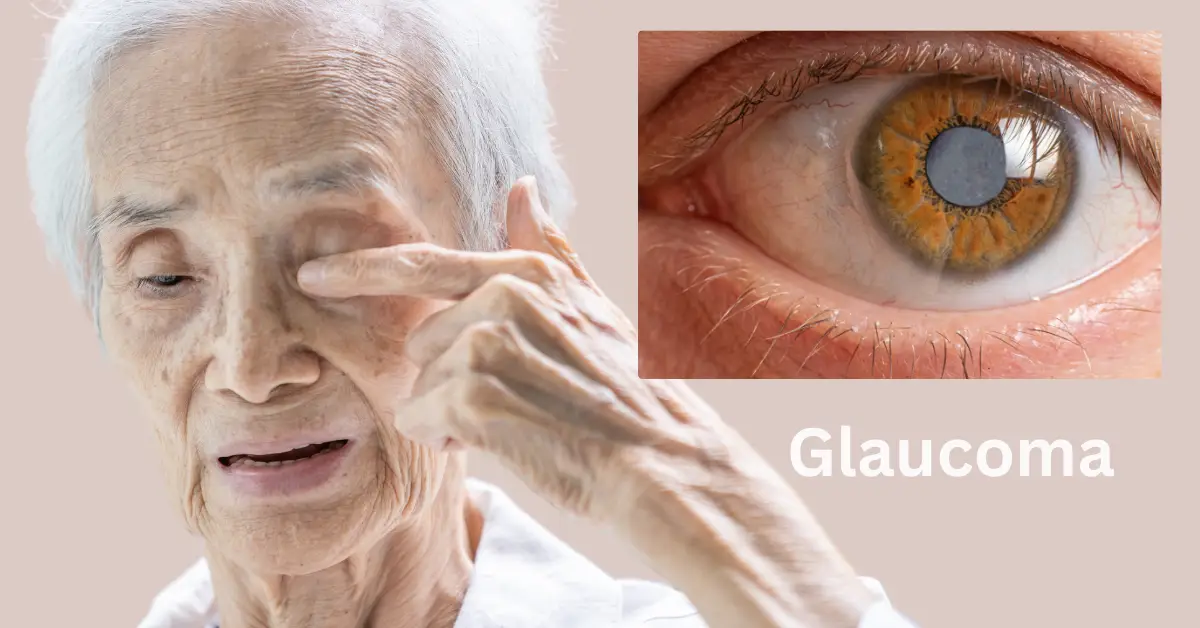Glaucoma
Glaucoma is a serious eye condition that affects the optic nerve, which is crucial for sending visual signals from the eye to the brain. Damage to this nerve can lead to vision loss, and in some cases, blindness. While glaucoma is often linked to elevated pressure inside the eye, known as intraocular pressure (IOP), it can still occur even when eye pressure is normal.
This disease can affect people of all ages but is most commonly seen in older adults, making it one of the leading causes of blindness for those over 60. A major concern with glaucoma is that many forms show no symptoms until significant vision loss has already occurred. Because the condition progresses so gradually, people may not notice any changes until it’s too late.
Regular eye exams are key in detecting glaucoma early. Eye pressure tests, among other evaluations, can help catch the disease before severe damage happens. If diagnosed, treatment or monitoring will be necessary for life to slow or prevent further vision loss. Early detection and consistent care are critical to preserving your sight.
Contents
Why is Glaucoma Dangerous?
Glaucoma Eye Disease is often called the “silent thief of sight” because it can progress without noticeable symptoms in the early stages. By the time vision problems become apparent, significant damage may already have occurred. It is important to have regular check-ups with an eye doctor to detect the disease at an early stage.
Types of Glaucoma Eye Disease
There are several types of glaucoma, each with its unique causes and symptoms:
1. Open-Angle Glaucoma
- The most common type: Open-angle glaucoma accounts for approximately 90% of all glaucoma cases.
- Slow progression: It develops gradually and often without early symptoms.
- Cause: The eye’s drainage system becomes inefficient, leading to pressure buildup.
2. Angle-Closure Glaucoma
- Acute condition: Angle-closure glaucoma can develop suddenly and requires immediate medical attention.
- Symptoms: Severe eye pain, nausea, blurred vision, and halos around lights.
- Risk: A sudden rise in eye pressure due to blocked drainage pathways.
3. Normal-Tension Glaucoma
- No high pressure: This type occurs despite normal intraocular pressure, yet optic nerve damage still happens.
- Unknown cause: The exact cause is unclear, but it could be related to blood flow issues or nerve sensitivity.
4. Congenital Glaucoma
- Present at birth: This rare form affects infants and is caused by abnormal eye development.
- Early diagnosis is key: Surgery is often required to correct the issue.
5. Secondary Glaucoma
- Caused by another condition: Secondary glaucoma results from eye injuries, cataracts, diabetes, or other medical issues.
- Treatment varies: Addressing the underlying condition can help manage the pressure in the eye.
What Causes Glaucoma?
Several factors may contribute to the development of glaucoma in the initial stage:
1. Elevated Eye Pressure (Intraocular Pressure)
- Main risk factor: Increased pressure in the eye can damage the optic nerve over time.
- Blocked drainage: The eye’s natural fluid doesn’t drain properly, leading to pressure buildup.
2. Genetics
- Family history: If glaucoma runs in your family, you are at a higher risk.
- Ethnic background: African Americans, Asians, and Hispanics have higher chances of developing glaucoma.
3. Age and Medical Conditions
- Older age: Individuals over the age of 60 are more likely to develop glaucoma.
- Diabetes and hypertension: These medical conditions can increase eye pressure and raise glaucoma risks.
4. Eye Injuries or Infections
- Trauma: Previous eye injuries or infections may lead to secondary glaucoma.
- Medication use: Prolonged use of corticosteroids can also raise the risk of developing glaucoma.
Recognizing Glaucoma Symptoms
The symptoms of glaucoma vary depending on the type and progression of the disease:
Open-Angle Glaucoma Symptoms
- No early signs: In the beginning stages, there may be no noticeable symptoms.
- Gradual vision loss: Over time, peripheral vision narrows, leading to tunnel vision.
Angle-Closure Glaucoma Symptoms
- Sudden symptoms: Eye pain, blurred vision, headache, and nausea.
- Vision loss: Sudden onset of vision problems can occur, requiring urgent medical care.
Normal-Tension Glaucoma Symptoms
- Peripheral vision loss: Similar to open-angle glaucoma, but without the pressure increase.
Diagnosis of Glaucoma

Early detection of glaucoma is critical to preventing severe vision loss. Eye doctors perform various tests to diagnose glaucoma:
1. Tonometry
Measures intraocular pressure: This simple test determines the pressure inside your eye.
2. Visual Field Test
Checks peripheral vision: Helps assess if your vision is affected by glaucoma.
3. Pachymetry
Measures corneal thickness: Corneal thickness can influence intraocular pressure readings.
4. Optical Coherence Tomography (OCT)
Advanced imaging: OCT provides detailed images of the optic nerve, allowing doctors to monitor changes over time.
Treatment Options for Glaucoma
While glaucoma cannot be cured, it can be managed to slow its progression and protect vision. Treatment options vary based on the type and severity of glaucoma:
1. Medications
- Eye drops: Commonly prescribed to reduce intraocular pressure. They work by decreasing fluid production or improving fluid drainage.
- Oral medications: If eye drops are not enough, oral drugs may be used to lower eye pressure.
2. Laser Therapy
- Trabeculoplasty: This procedure improves the eye’s drainage system to lower pressure.
- Iridotomy: For angle-closure glaucoma, laser treatment can create a small hole in the iris to improve drainage.
3. Surgery
When medications and laser therapy are not effective, surgery may be necessary to reduce eye pressure:
- Trabeculectomy: A surgical procedure that creates a new channel for fluid to drain, reducing pressure in the eye.
- Drainage implants: Tiny tubes are inserted to help drain excess fluid from the eye.
Preventing Glaucoma
While some risk factors like age and genetics cannot be controlled, there are ways to lower your risk of developing glaucoma:
1. Regular Eye Exams
Routine checkups: Regular eye exams, especially after the age of 40, can help detect glaucoma early.
2. Protect Your Eyes
Avoid injury: Wear protective eyewear during activities that may result in eye trauma.
3. Maintain a Healthy Lifestyle
- Exercise regularly: Physical activity can lower eye pressure.
- Healthy diet: Eating leafy greens and foods rich in antioxidants supports overall eye health.
4. Manage Medical Conditions
Control diabetes and blood pressure: Properly managing these conditions can reduce your risk of glaucoma.
Living with Glaucoma
While glaucoma can lead to vision loss, many people manage the condition successfully with proper care and lifestyle adjustments:
1. Use Visual Aids
Assistive devices: Magnifying glasses, better lighting, and large-print materials can make daily tasks easier.
2. Regular Monitoring
Consistent follow-ups: Regular visits to the ophthalmologist ensure the condition is under control and treatment is effective.
3. Emotional Support
Support groups: Connecting with others who have glaucoma can help manage the emotional aspects of living with the disease.
Common Myths About Glaucoma
There are several misconceptions about glaucoma that can prevent people from seeking timely treatment:
Myth 1: Only the Elderly Get Glaucoma
Fact: While older adults are more likely to develop glaucoma, it can affect people of all ages, including infants.
Myth 2: Glaucoma Only Occurs with High Eye Pressure
Fact: Normal-tension glaucoma can damage the optic nerve even without elevated intraocular pressure.
Myth 3: Vision Loss from Glaucoma is Reversible
Fact: Once vision is lost, it cannot be restored. Early detection is key to preventing severe vision impairment.
Conclusion:
Glaucoma is a serious condition that requires lifelong management to preserve vision. Regular eye exams, a healthy lifestyle, and early treatment are essential to slowing the disease’s progression. By staying informed about glaucoma, you can take the necessary steps to protect your sight and maintain a high quality of life.
FAQ’s,
What are the early symptoms of glaucoma?
Early symptoms of glaucoma can be subtle, often including gradual vision loss, especially peripheral vision, without noticeable pain.
What causes glaucoma, and how does it develop?
Glaucoma is primarily caused by increased intraocular pressure (IOP), which damages the optic nerve. Factors like genetics, age, and certain health conditions contribute to its development.
How is glaucoma diagnosed?
Glaucoma is diagnosed through comprehensive eye exams, including tests like tonometry (measuring eye pressure), visual field tests, and optic nerve imaging.
What are the treatment options for glaucoma?
Treatments for glaucoma include prescription eye drops, oral medications, laser therapy, and surgery to reduce intraocular pressure and prevent further damage.
Can glaucoma be cured or prevented?
While there is no cure for glaucoma, early detection and proper treatment can help manage the condition and slow its progression, preventing severe vision loss.

